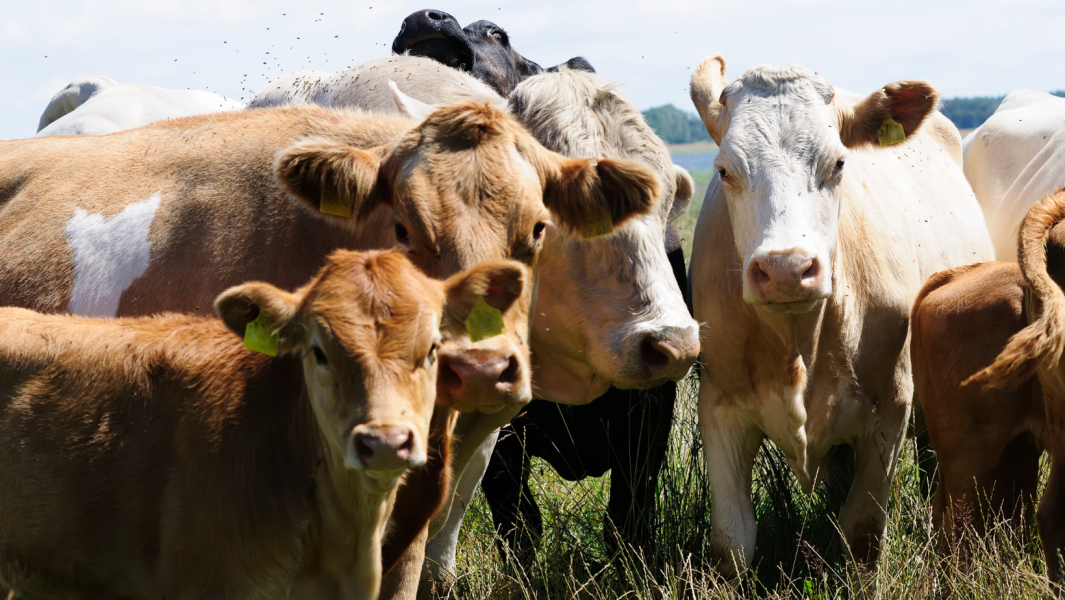Archives
- Home
- News
- Posts
- Agri Orbit
- Keep your calf crop healthy by banishing brucellosis
Keep your calf crop healthy by banishing brucellosis
- Agri Orbit
-
Jul 21
- Share post

It is completely normal to have one or two animals that abort in a herd. However, when more than 3% of your herd aborts or a large number of animals abort in short succession, alarm bells should start ringing. Dr Dries Lessing from Frankfort Animal Clinic says there are a few reasons why cows abort.
“The problem may be an infected calf, placenta or uterine wall. Toxins (chemical or vegetative) can also end up in the cow’s bloodstream, leading to an aborted calf. Fever is often a precursor to abortion. If the cow has a high fever, it can lead to the calf’s death. Abortions can also be caused by hormone deficiencies,” he explains.
Bacteria, protozoa, viruses or fungi, he emphasises, typically cause fever or infection in the calf, placenta or uterus. The main culprit behind abortions in cattle is a bacterium called Brucella abortus, which gives rise to brucellosis.
Brucellosis used to be fairly under control, but the disease has unfortunately resurfaced as a major threat to cattle and game farmers, especially in areas where buffaloes are farmed.
Animal to human transmission
Brucellosis is transmissible to humans. Anything that comes from the uterus of the female animal can infect the person who handles that animal – the same applies to the blood or milk from an infected cow. Since humans can contract the disease, a dairy producer cannot supply milk if his or her herd is brucellosis positive.
According to Dr Lessing, it might soon be the case that a beef cattle producer will also not be allowed to sell beef if his or her herd is not free of B. abortus.
Prevention is the only defence
“Although preventable, brucellosis is not necessarily treatable and can cost a livestock producer a lot of money if he or she does not act preventively. In fact, in my 34 years as a veterinarian, I have seen many a producer go bankrupt because of B. abortus,” he says.
Brucellosis is highly contagious, and infection occurs when a cow comes into contact with excretions of other cows that are B. abortus positive. He adds that any uterine discharge, a calf and the placenta are also contagious.
BRUCELLOSIS USED TO BE FAIRLY UNDER CONTROL, BUT THE DISEASE HAS UNFORTUNATELY RESURFACED AS A MAJOR THREAT TO CATTLE AND GAME FARMERS, ESPECIALLY IN AREAS WHERE BUFFALOES ARE FARMED.
“Far fewer animals will abort if you vaccinate your heifers against B. abortus. However, acting preventively is still the best course of action.”
Producers can keep their herds disease-free by applying a few simple measures:
- Test animals annually to determine if B. abortus is present in herds.
- Vaccinate all heifers between the ages of three and eight months each year. Two vaccines are available – consult your veterinarian in this regard.
- Even if animals were purchased from herds that are brucellosis-free, it is best to first quarantine and test them before introducing them into your existing herd.
- When purchasing heifers of which the dams tested positive, their calves can also be positive, although blood tests will only show this while the heifers are pregnant. It is therefore vital to have bought-in heifers tested prior to calving.
- Encourage your neighbours to test and vaccinate their animals as well. This way, your animals will not become infected, and the disease can be eradicated.
State intervention
Brucellosis prevention is currently a national project, and all cattle producers are encouraged to participate in these efforts. Dr Lessing explains that it is an incurable, state-controlled disease, and that blood samples must therefore be handled in an accredited laboratory by a veterinarian or animal health technician from the state.
The state also takes control in cases of brucellosis outbreaks in a herd. Where animals do test positive, the dairy, stud and breeding animals will be slaughtered and the producer compensated according to the prevailing meat price applicable to that animal. Since these animals can no longer produce any offspring, the producer will be losing a tremendous amount of money.
“The longer you wait to remove the animals that tested positive from your herd, the higher the number of positive animals and the greater the loss. Even when you have a closed herd and you are taking precautions by vaccinating your heifers, the disease can still crop up in your herd. Animals must therefore be tested regularly to make sure the herd is clean,” says Dr Lessing.
Lorem ipsum dolor sit amet, consectetur adipiscing elit. Ut elit tellus, luctus nec ullamcorper mattis, pulvinar dapibus leo.





